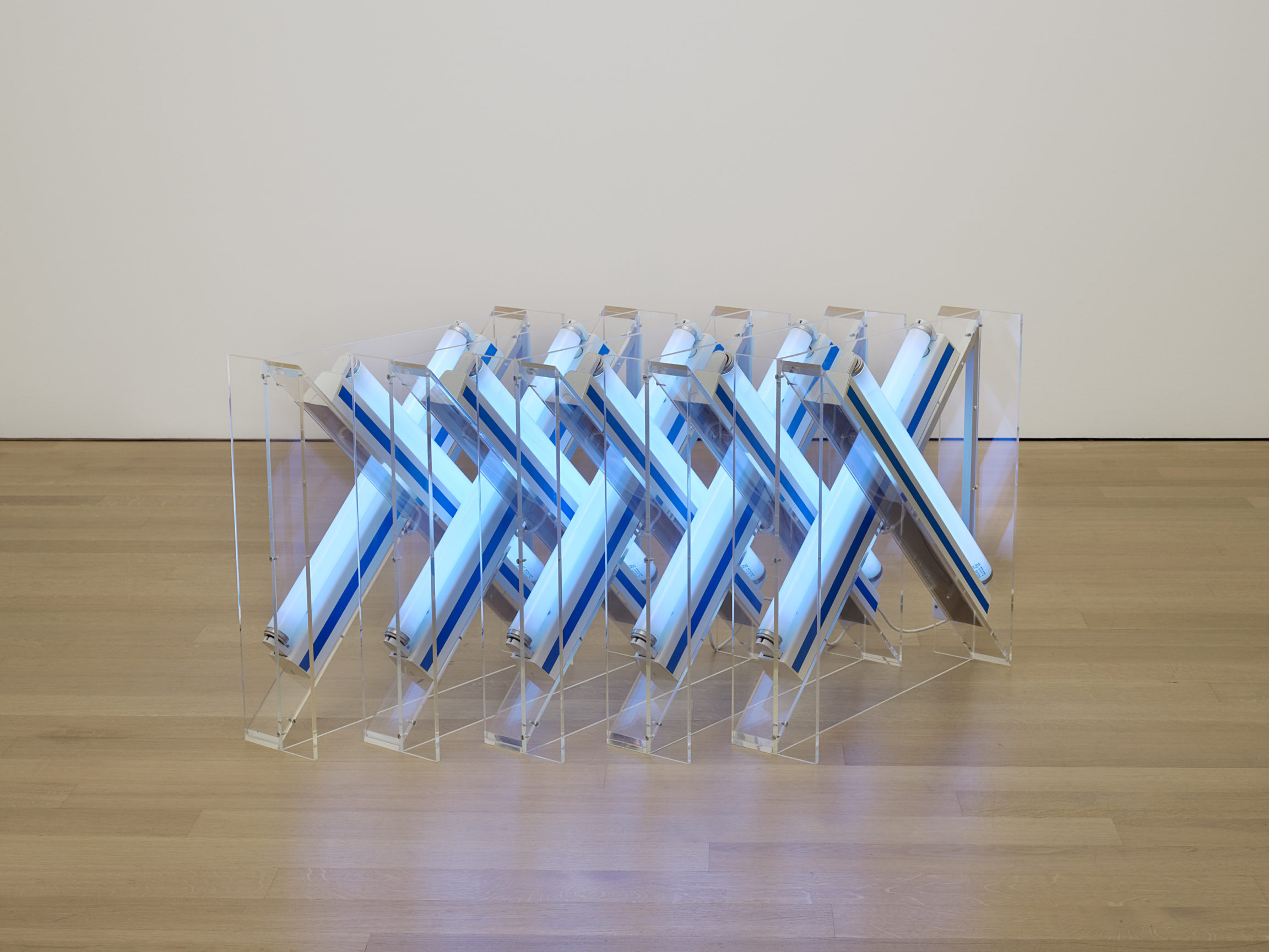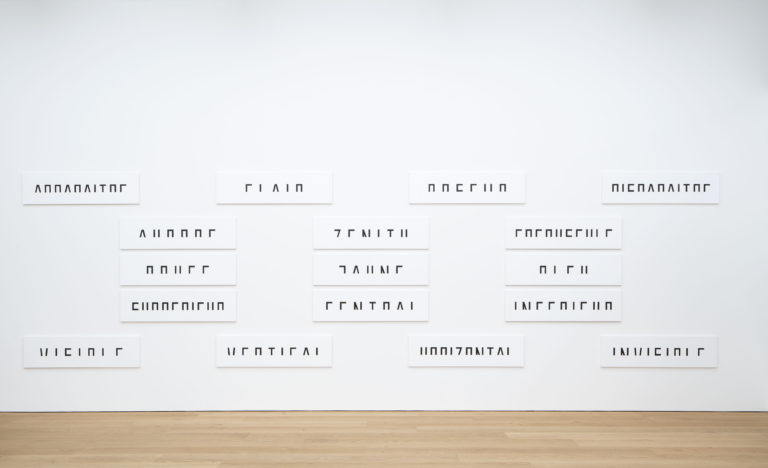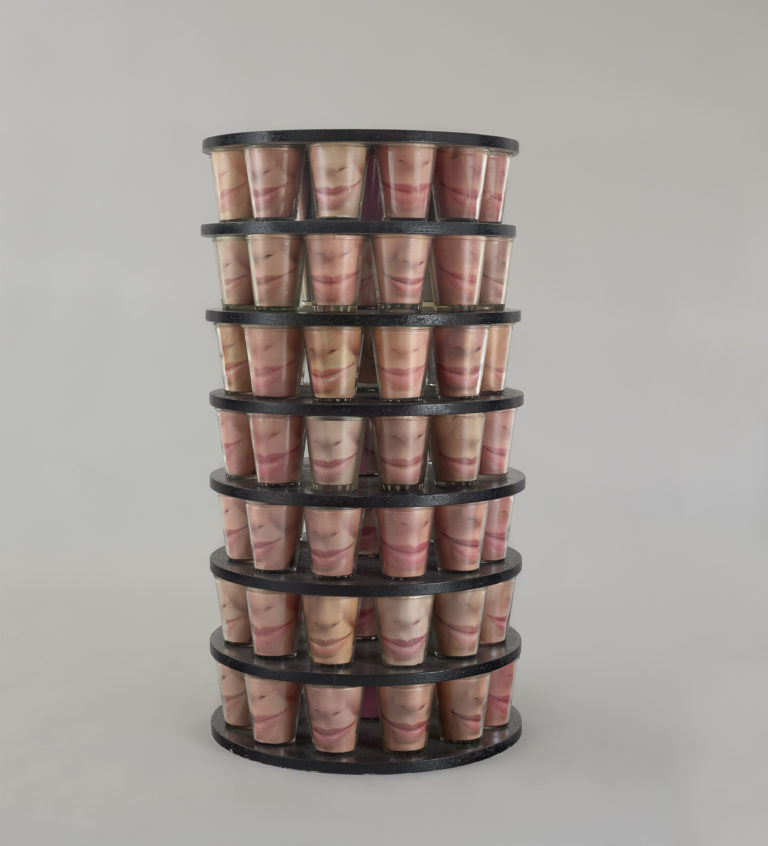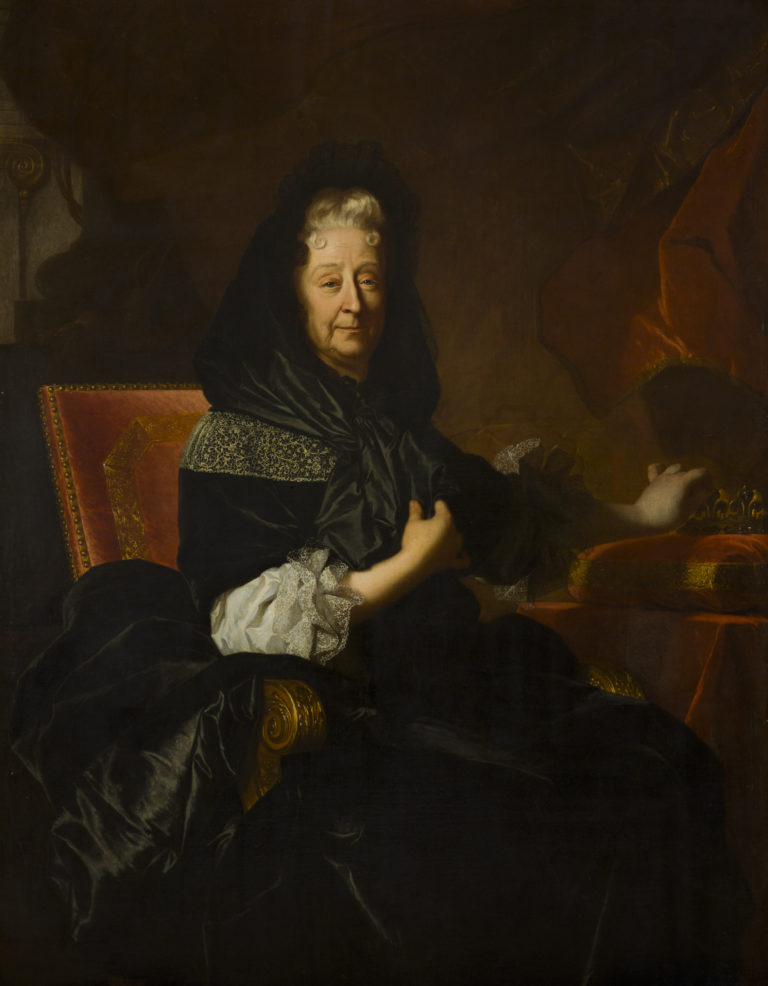Bibliography
Michela Simona, ‘René Bauermeister ou le parcours d’un artiste solitaire dans la généalogie des médias,’ Revue vaudoise de généalogie et d’histoire des familles, Lausanne, Cercle de généalogie vaudoise, 2013: 159-172.
Jacques Monnier-Rabal, ‘Renée Bauermeister, l’ingénieux ingénu,’ René Bauermeister: photographies, travaux vidéo, exh. cat. Sion, Musée cantonal des beaux-arts, Grange à l’Evêque, 1988: 6-7.
Marcel Schüpbach, ‘René Bauermeister: le mécanisme de la perfection,’ Gazette de Lausanne, n. 229, Sept. 30th—Oct. 1st, 1970.




Animation lumineuse is one in a set of six sculptures made by Bauermeister between 1966 and 1968 which he donated to the Museum in 1976, several years after he had begun making experimental films and videos, a practice that he pioneered in Switzerland alongside his friends Jean Otth, Janos Urban, Gérald Minkoff and Muriel Olesen.
Trained at the École d’art appliqué in Biel and in La Chaux-de-Fonds, Bauermeister later frequented the Parisian studios of André Lhote and Fernand Léger in 1953 and 1954. After initially working in two dimensions (painting), he started to explore volume, constructing the models for his sculptures and then drawing up the plans for their factory production. Iron, aluminium, chrome-plated metal, polyester, acrylic glass, neon – he used industrial materials to make forms that were simple and surfaces that were uncluttered.
Animation lumineuse was shown at Galerie Templon, Paris, in 1969 along with three more of the six sculptures held by the Museum. It is the only one of the set that is made up of neons and one of the only luminous sculptures by this artist to be found in a public collection. Comprising a succession of neons forming crosses and set in transparent Plexiglas cases, the sculpture appears to be a module that could be repeated ad infinitum. This principle is characteristic of the minimalist sculpture of the day and seems to anticipate later developments in Bauermeister’s work, notably his exclusive focus on moving images after 1970. Indeed, the question of how we perceive a volume in a given space is already linked to that of temporality here, by the ‘animation’ from the glow of the neon. As the artist noted in an interview given in 1970, ‘Ultimately, an object in three dimensions refers only to its own obviousness, whereas an image has its repetitions, infinite echoes …. The core of my approach consists in exposing the mechanisms of perception by following the different paths that it takes.’